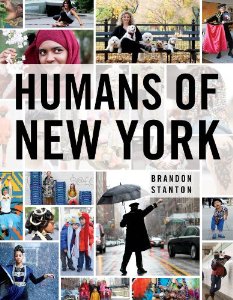Books:
- De L’Ecotais,E. And Sayag, A (1998) Man Ray: Photography and its Double. London: Laurence King Publishing
- Lange,D., Coles, R. and Heyman, T. (1996) Dorothea Lange: Photographs of a lifetime. New York,NY: Aperture
- Leibovitz, A (2008). Annie Leibovitz At Work. London: Johnathan Cape. 180-189.
- Leiter, S and Kozloff, M (2008) Saul Leiter. London: Thames & Hudson
- Londei, J (2007).Shutting Up Shop: The Decline of the Traditional Small Shop. London: Dewi Lewis Ltd. 20-25
- Mann,S (1993) Sally Mann: Immediate Family. London: Phaidon Press
- Michalski, S (2003).New Objectivity Midsize. Germany: Taschen GmbH. Page 180.
- Sander, A. (1990) Andtlitz der Zeit:sechzig Aufnahmen deutscher Menschen des 20.Jahrundrets. Munich: Schirmer/Mosel Verlag GmbH
- Sontag, S (2001).Women. London: Random House. 22-23.
- Tillmans, W (2002).Schirmer’s Visuelle Bibliothek. London: Distrubuted Art Publishers. 6-7.
Journals:
- Coffey,M. (2013). Humans of New York’ storms bestseller list. BestSellers. 260 (1), 10-11
- Conley,K. (2003). Model Life. The New Yorker. 78 (3), 68-69.
- Delaney, J. (2012). Hoboken Passing. British Journal of Photography. 159 (1), 18-19.
- Londe, J. (2008). Shutting Up Shop. Shutting Up Shop: The Decline of the Traditional Small Shop. 15 (3), 65-66
- Mann,S. (2001). Photographer: Sally Mann. Time. 158 (1), 76-77.
- Mortram,J. (2013) Ones To Watch. British Journal of Photography.160 (2), 50-51
- Papo, R. (2012). Desperately Perfect. The Women’s review of books. 29 (1), 16-17.
- Pimenoff,V. (2012). The Dark Collection. British Journal of Photography. 159 (2), 22-23.
- Sheikh,F. (2007). Photographs. TriQuarterly. 131 (1), 128-129
- Wright, T. (2012). Night Photography. British Journal of Photography. 159 (3), 50-51.
Exhibitions:
- McClure,R. and McCabe,E. (2014) Taylor Wessing Portrait Prize 2014. United Kingdom: National Portrait Gallery Publications
- Muir, (2014)The Taylor Wessing Portrait Prize. Exhibited London: The National Portrait Gallery. (viewed: 14th February 2015).
- Trompeteler,H. (2014) Snowdon, A Life in View. Exhibited London: The National Portrait Gallery. (viewed: 14th February 2015).
Websites:
- http://www.rachelpapo.com/about.html
- http://www.thisiscolossal.com/2015/04/skateistan-jessica-fulford-dobson/
- https://www.saatchigallery.com/current/skate_girls_of_kabul.php
- John Londei Photography. 2013.Shops. [ONLINE] Available at :http://www.johnlondei.co.uk/index.php?filename=index. [Accessed 01 March 15].
- National Portrait Gallery. 2014.The Taylor Wessing Photographic Portrait Prize. [ONLINE] Available at:http://www.npg.org.uk/photoprize1/site14/index.php. [Accessed 15 February 15].
- Orlan. 2013.Bibliography. [ONLINE] Available at: http://www.orlan.eu/biography/ (Last Accessed 23 January 15).
- The Metropolitan Museum of Art. 2014. Eugène Pelletan. [ONLINE] Available at: http://www.metmuseum.org/toah/works-of-art/1991.1198. [Accessed 24 January 15].







